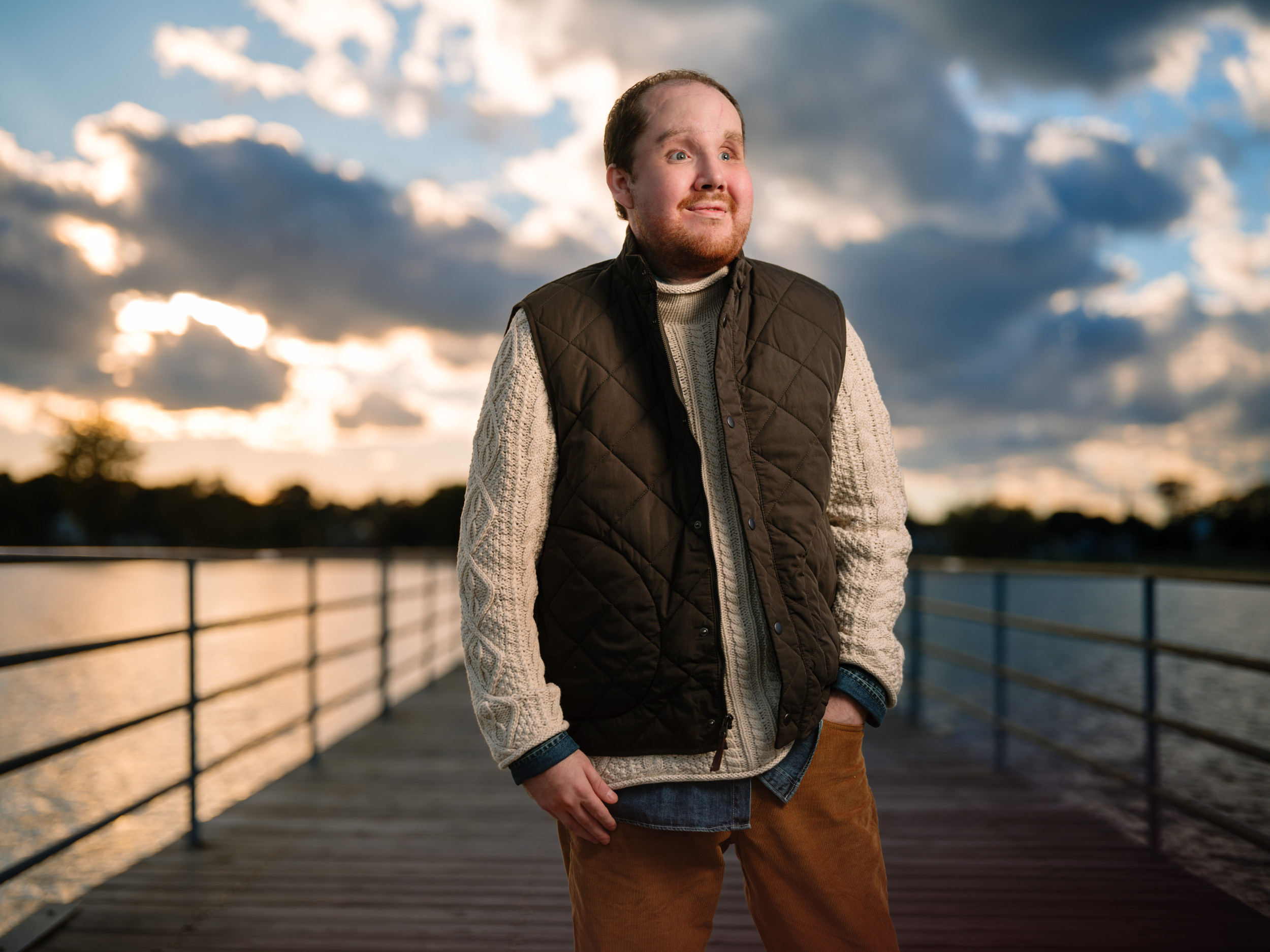
A Michigan man has received a life-changing face transplant a decade after he attempted to take his own life and miraculously survived.
Derek Pfaff of Harbor Beach underwent the complex procedure at the Mayo Clinic in Rochester, Minnesota, earlier this year, according to an announcement published Tuesday. The marathon operation lasted more than 50 hours and involved a multidisciplinary team of at least 80 health-care professionals.
Thanks to the transformative procedure, Pfaff can now blink, smile and breathe through his nose for the first time in around 10 years. The 30-year-old had previously undergone 58 reconstructive facial surgeries. But he still struggled to speak and breathe normally. His nose was also missing and he could not chew or swallow food, being forced to use a feeding tube. In addition, he only had one eye and was unable to blink. Now, many of these lost facial functions have been restored.
“After my last surgery, the doctor told my parents that there’s nothing more he could do except refer us to a place to get a face transplant,” Pfaff said in an announcement on the Mayo Clinic website. “This surgery has transformed my life. I feel so much more confident.”
Mayo Clinic
The first face transplant was carried out almost 20 years ago, and since then more than 50 such procedures have been performed around the world. The latest procedure is the second face transplant to be carried out by Mayo Clinic—a non-profit medical practice and research group—with the first undertaken in 2016.
Pfaff attempted to take his own life on March 5, 2014, at the age of 19 while home from college on spring break.
“I looked across, and the gun cabinet was open… my heart dropped,” said his father Jerry Pfaff.
“He does not remember getting the gun. He does not remember going outside. He does not remember shooting himself,” said his mother, Lisa. “We met with the doctors, and they told us that there was no way Derek was going to make it. It’s a miracle he lived.”
While the then-19-year-old survived the incident, his face was severely damaged by the gunshot.
“I should have died that night. I’m thankful to be alive,” he said.
In February 2024, a facial donor became available and the decision was taken to perform the transplant. It was conducted by a multidisciplinary team led by Dr. Samir Mardini, a facial reconstructive surgeon who is surgical director of Mayo Clinic’s Reconstructive Transplant Program.
Complex Surgery
Mardini said an estimated 85 percent of Pfaff’s face was successfully reconstructed and replaced with donor tissue. This included his upper and lower eyelids, upper and lower jaws, teeth, nose, cheek structure, neck skin, hard palate and parts of his soft palate.
“The restorative nature of the facial transplant makes it very complex,” Mardini said.
The surgery was meticulously planned over several months. The team even created a digital surgical plan relying on detailed scans of both the donor’s and recipient’s faces. This enabled them to perform the surgery digitally first.
One of the most challenging aspects of the surgery was reconnecting the many small nerves between Pfaff’s face and the donor tissue, to ensure functions like eating, blinking and even smiling were restored.
The team mapped the delicate facial nerves of both the donor and the recipient to aid with this effort.
“We’re trying to give Derek back functions he was missing for 10 years,” Mardini said. “Most organ transplants are lifesaving. With facial transplantation, it’s a life-giving operation. You can live without it, but you are missing out on life.”
After the initial procedure, Pfaff underwent additional surgery to refine his appearance, improve his tongue and eyelid function, and to ensure that the newly connected nerves were functioning properly.
“This is not an aesthetic operation, although the side benefits of it are hugely beneficial for the aesthetics of the patient,” Mardini said. “Derek is looking to be normal. He’s looking to walk on the street and not have anyone notice anything on him.”
“It’s been 10 years since you’ve seen a nose, lips and teeth on your son—just totally amazing, a miracle,” Jerry Pfaff said.
The 30-year-old has now become a passionate advocate for suicide prevention and plans to share his story to encourage people who are struggling to seek help.
“I lived for a reason. I want to help others,” Pfaff said. “I am so grateful to my donor, his family and my care team at Mayo Clinic for giving me this second chance.”
If you or someone you know is considering suicide, contact the 988 Suicide and Crisis Lifeline by dialing 988, text “988” to the Crisis Text Line at 741741 or go to 988lifeline.org
Is there a health issue that’s worrying you? Do you have a question about health? Let us know via health@newsweek.com. We can ask experts for advice, and your story could be featured on Newsweek.
